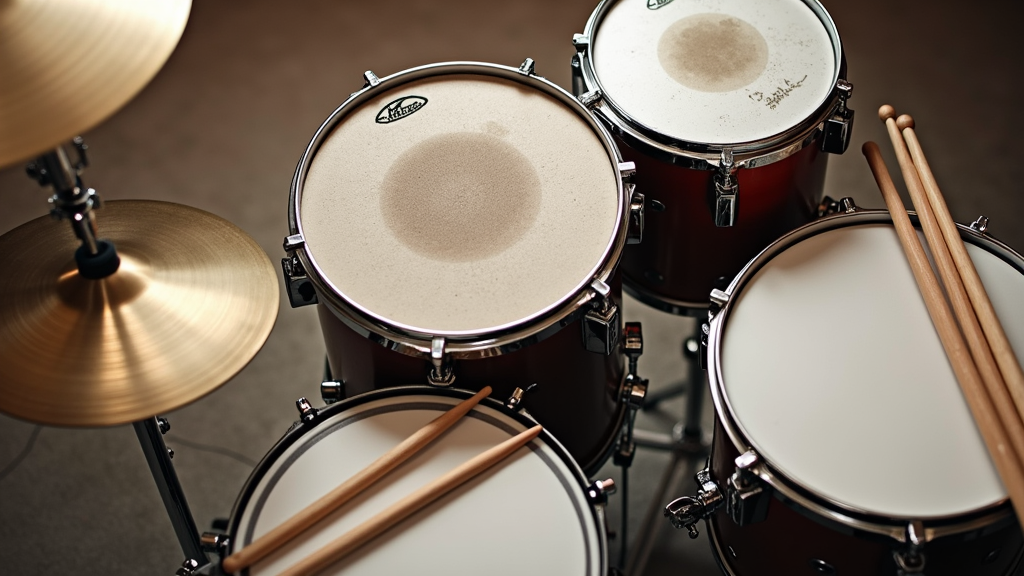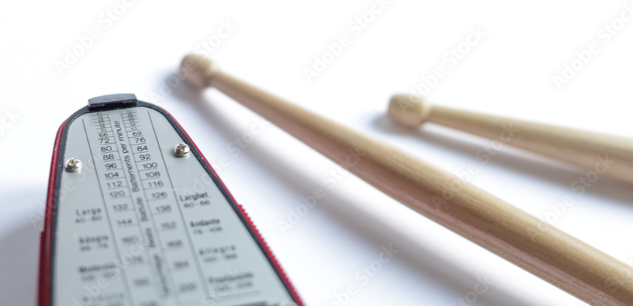Drumming is an exciting and accessible way to jump into the world of music. As a beginner drummer, you might feel overwhelmed by the many techniques and exercises available. This article is here to help guide you, focusing on simple drumming techniques that are great for anyone just starting out. Whether it’s learning how to hold your sticks properly or understanding basic rhythms, you’ll quickly stumble upon the fact that consistent practice leads to steady progress. With each beat you play, you gradually build confidence and muscle memory that supports all aspects of your musical adventure.

Foundational Drumming Techniques Every Beginner Should Learn
The first step in mastering drumming is to learn a few key techniques. These foundational methods not only build confidence but also improve your coordination and timing as you progress. Many beginners start by focusing on their grip, stroke, and overall posture at the drum kit. Keeping your grip relaxed yet controlled gives you the ability to produce soft or loud sounds depending on what the song requires. Experimenting with different stick heights and angles can help you discover what feels most natural for your style.
Drum rudiments are the building blocks of every drum performance. These include single strokes, double strokes, and paradiddles, which set the stage for more complex rhythms later on. Spending even a few extra minutes a day on each rudiment can transform your technical abilities. The consistent practice of these exercises not only builds essential muscle memory but also teaches your arms and hands to move in perfect harmony. As you progress, try mixing various rudiments together to create your own combinations, allowing your personal style to shine through each practice session.
In addition to technical drills, it is beneficial to integrate listening sessions into your practice. Listening to various styles of drumming can help you understand how these basic techniques are applied in different musical genres. Analyzing recordings of master drummers gives you insights that can be incorporated into your own techniques. By broadening your horizons and comparing different drumming styles, you develop a versatile approach that will serve you well as you grow as a musician.
Getting Started with a Practice Routine
Establishing a structured practice routine can really speed things up for a beginner drummer. A well-thought-out plan includes time for warm-up exercises, rudiment drills, and playing along with songs. Consistent, focused practice helps in forging both technique and creativity. By dedicating a specific amount of time each day, you can steadily improve without feeling overwhelmed by all there is to learn. A strong routine lays the foundation for both discipline and progress.
Start by creating a warm-up session centered on basic stick control. Stretching your arms and hands before each session not only reduces the chance of injury but also prepares your muscles for the upcoming work. After your warm-up, spend a few minutes on rudiments and simple coordination exercises. Playing along with a metronome ensures that you get a feel for the rhythm and timing crucial in drumming practice. Finally, enjoy playing along with your favorite tracks, which not only makes the session more challenging but also incredibly fun. Adding variety to your practice routine keeps you motivated and continuously improves your versatility at the drum kit.
For those looking to push themselves further, try recording your practice sessions. Listening back to your recordings can reveal subtleties that you might have missed while playing. This self-review process is invaluable for spotting areas that need improvement and recognizing small victories along the way. Over time, as you analyze your recordings, you can fine-tune your techniques and gradually introduce more complex patterns and fills. Remember, the goal is not to rush but to steadily build your confidence and proficiency as you grow.
It is also useful to set clear, achievable goals for each practice session. Whether it is mastering a new rudiment or increasing your speed on a particular pattern, clear goals serve as stepping stones in your continuous improvement. By breaking down your entire practice into smaller segments, you make your progress more manageable and trackable. This method allows you to enjoy every small win and maintain a sustained level of enthusiasm throughout your learning process.
Common Challenges and How to Overcome Them
Many beginner drummers face challenges as they start learning, such as developing the right grip, maintaining consistent timing, and managing coordination between their hands and feet. Addressing these obstacles early on sets a practical roadmap for steady improvement. Most challenges can be overcome with patience, proper technique adjustment, and a willingness to try different approaches until you find what works best.
Proper Grip and Stance
Holding drumsticks may look simple, but a proper grip is essential for long-term comfort and control. Beginners often grip the sticks either too tightly or too loosely, affecting the quality of their strokes. A balanced grip, where the sticks are held securely yet with enough flexibility to produce a range of dynamics, can make a significant impact on your overall performance. Experiment with slight adjustments and ask for feedback from experienced drummers to ensure that you are as comfortable and efficient as possible. Taking the time to fine-tune your grip will pay dividends in terms of precision and endurance over long practice sessions.
Additionally, focusing on your posture when sitting at the drum kit can help prevent unnecessary tension throughout your body. A relaxed but alert posture allows you to move freely, ensuring that every stroke is delivered with maximum effectiveness. By spending a few extra minutes each practice session perfecting your grip and posture, you build a strong physical foundation that supports all other drumming skills.
Mastering Timing and Rhythm

Staying in time is one of the biggest hurdles for new drummers. You might find it tricky to keep up with a consistent beat when you’re just starting out. One of the most useful tools for improving timing is a metronome. Practicing with a metronome prepares you for higher precision while embedding an internal sense of rhythm. Start with simple beats and gradually challenge yourself with more complex rhythms as you become accustomed to your instrument.
It also helps to practice along with recordings of your favorite songs. This way, you not only improve your timing but also learn how different rhythms and paces affect the overall feel of a piece. Over time, these practices help you develop an almost instinctive understanding of musical flow, making your drumming feel as natural as breathing. The key is to keep experimenting with different tempos and styles until you find the rhythm that best suits you.
Improving Coordination
Developing proper coordination between your limbs takes time and focused practice. Many beginners struggle with synchronizing the movements of their hands and feet, especially when working the bass drum. One effective method is to practice simple kick-snare patterns at a slow tempo and then gradually pick up the pace. This step-by-step approach ensures that you build effective muscle memory, allowing you to integrate more complex coordination tasks seamlessly over time.
Extra coordination exercises can include playing rudiments with your hands while simultaneously keeping a steady beat on the bass drum. As you get more comfortable, try incorporating more diverse patterns that challenge the links between different parts of your body. By experimenting with various coordination drills, you not only build technical strength but also deepen your overall connection with your instrument. Remember that practice and persistence are very important facets of learning to coordinate effectively. Through repetition and careful attention to technique, you will eventually notice a significant improvement in your overall drumming fluidity.
Other issues like fatigue, frustration, or even minor injuries may occasionally interfere with practice sessions. Adjusting your routine to focus on weaker areas while giving yourself time to rest is the key to overcoming these challenges. Always listen to your body, and take the necessary breaks to avoid overexertion. A well-paced practice session frequently yields much better results than a prolonged, rushed one.
Advanced Tips and Tricks for Improving Your Drumming Skills
Once you feel comfortable with the basics, you might be eager to up your game with more advanced techniques. At this stage, you can try incorporating more complex rudiments and varying your dynamics during performances. Experimenting with different styles of play, whether it is softer jazz patterns or harder rock beats, can expand your musical range significantly. Trying out a variety of playing methods helps you tailor your style to fit different musical scenarios.
One technique used by many advanced drummers is practicing with different types of brushes or mallets. Not only does this challenge you to control your strokes in new ways, but it also adds an extra layer of variety to your playing style. As you experiment with these different tools, try to integrate ghost notes and syncopated beats that add extra flavor to your performances. Each new technique you introduce can bring a fresh perspective to your sound, making your drumming both dynamic and unpredictable.
Stepping up your drumming skills also involves being open to feedback. Regularly recording your performance and listening back can reveal subtle details and areas for improvement that may not have been noticeable in the moment. Peer reviews or consultations with more experienced drummers provide new insights into your technique, timing, and rhythm adjustments. Over time, this practice can help you level up your overall quality, ensuring that every practice session offers a learning experience that can be built upon in future performances.
In addition, exploring different musical genres can have a profound impact on your progress. Each genre typically has its own set of drumming techniques that can inspire new ideas. Even if a certain style is not your primary interest, the techniques you pick up can be mixed and matched to create a unique style that is entirely your own. Listening to an array of musical styles not only fuels creativity but also helps you develop a keen sense of rhythm and timing across different contexts.
Focus Areas for New Drummers
A strong drumming foundation is more about developing sound, repeatable habits than merely achieving fast tempos. Recognizing a few key focus areas can drastically improve your progress as a beginner. First, it is very important to perfect your basic strokes, such as single and double strokes, as these form the core of most musical patterns. With good control over these fundamental techniques, your overall drumming becomes more refined and technically sound.
Another key area is dynamics. Learning to play both softly and loudly creates a more nuanced performance that truly captures the essence and emotion of the music. Paying close attention to dynamics trains your hands to react naturally to the feel of the rhythm and the supporting instruments. This balance between power and subtlety is really important in any musical setting as it enriches the overall sound and experience of your performance.
Finally, using a metronome consistently during practice cannot be overemphasized. This simple tool is incredibly helpful in developing a solid internal sense of timing. When every stroke lands perfectly in sync, it creates a cohesive and impressive performance that listeners can appreciate. Combined with targeted self-review and peer feedback, these focus areas help build a robust foundation that will support your continued growth on the drum kit.
Frequently Asked Questions
Question: What is the best way to start learning drumming techniques?
Answer: Begin with the basics by understanding the correct grip and posture. Set aside time for simple rudiment exercises and practice with a metronome to get your timing right. When you record your practice sessions, you can easily spot areas for improvement. Consistent practice, setting clear goals, and gradually increasing the complexity of the drills will show results over time.
Question: How can I improve my coordination between hands and feet?
Answer: Focus on exercises that specifically emphasize hand-foot coordination. Start slow with basic kick-snare patterns and then gradually increase the tempo. Using a metronome and recording your practice sessions can help you fine-tune your movements. With regular practice, your ability to sync your limbs will improve noticeably, making your playing feel more natural.
Question: What should I do if I feel frustrated during practice?
Answer: Feeling frustrated is common when learning any new skill. When you hit a plateau, take a short break or switch your focus to another aspect of your playing. Listening to recordings of your progress can help you pick up on subtle improvements. Always remember that steady, focused practice beats rushed, unsystematic sessions any day. Patience and persistence are key to overcoming these hurdles.
Wrapping Up
Simple drumming techniques lay the groundwork for all future musical expression. Focusing on a proper grip, steady timing, and consistent practice builds a strong foundation that supports more advanced skills later on. Starting your drumming adventure with these basic yet effective techniques will not only boost your confidence but also prepare you for the challenges that await as you progress into more complex rhythms and patterns.
Remember that every great drummer started with simple beats and a lot of practice. Over time, as you gradually incorporate advanced techniques and experiment with different styles, your overall approach to drumming will transform. Keep playing, be patient with your progress, and enjoy every beat as you continue to grow. Music isn’t just about hitting the right notes. It’s about expressing yourself, connecting with others, and constantly learning along the way. With clear goals, regular practice, and a passion for percussion, there’s no limit to how far you can go.
By consistently dedicating time to both technical drills and creative exploration, you build a comprehensive skill set that sets you up for future success. Take the time to explore new rhythms, refine your techniques, and above all, have fun with your practice sessions. Your continued improvement is not only measured by speed or complexity, but by the joy you find in each practice session. Every tap of the drum and every pause in between is a step forward in your incredible musical adventure. Stay focused, keep experimenting, and remember that the world of drumming is vast and full of opportunities to grow and evolve.
